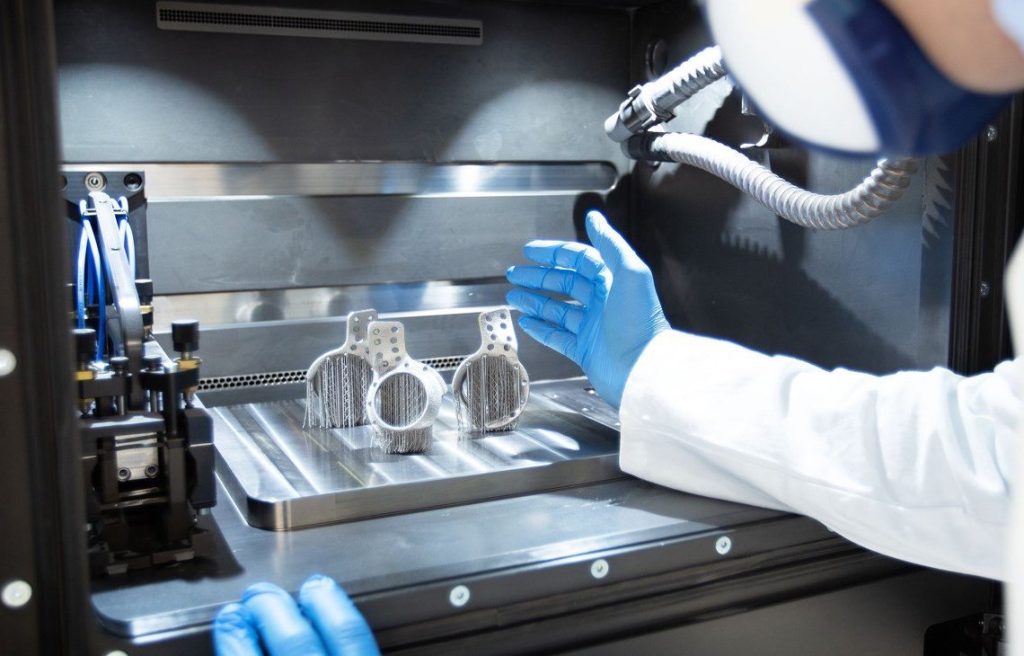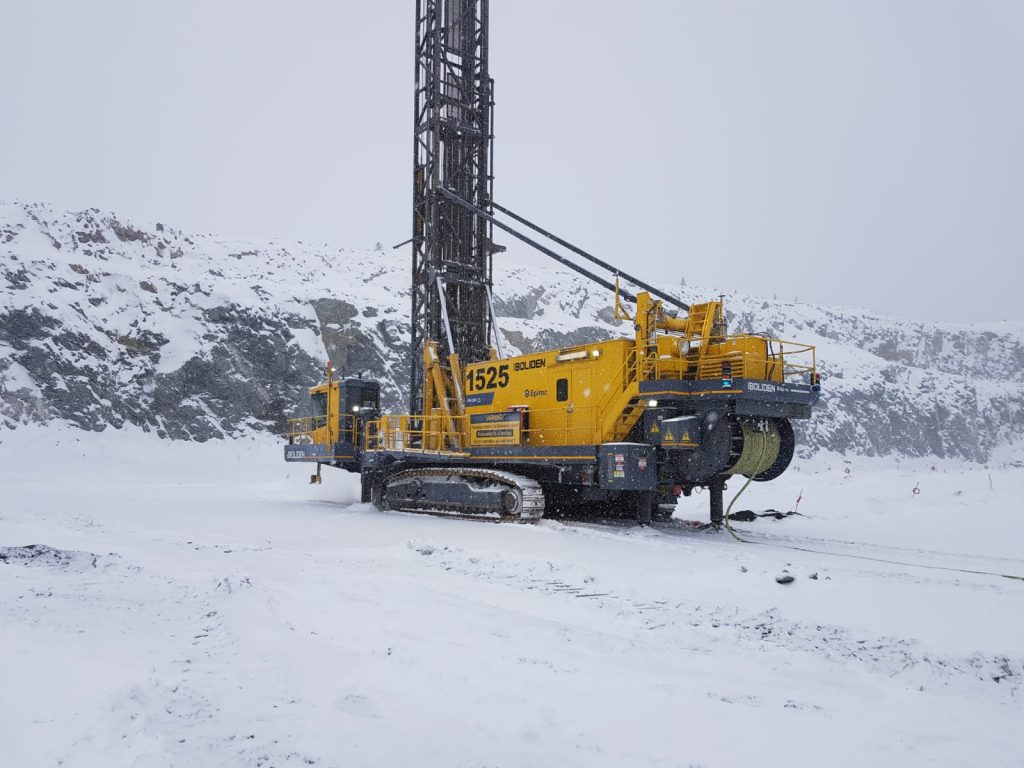Multinational mining and smelting firm Boliden has begun working with engineering group Sandvik to assess the potential of adopting 3D printing within its drilling operations.
Specifically, as part of an upcoming trial, Sandvik’s Mining and Rock Solutions division is set to develop a set of redesigned drill rig components, before testing them at Boliden’s Swedish and Irish sites. During the project, it’s believed these revised parts could outperform their predecessors, and having been 3D printed on-site rather than shipped there, provide supply chain sustainability benefits as well.
“Additive manufacturing shows a lot of potential, both in reducing carbon footprint within the supply chain, through reduced or eliminated need for transport and storage of parts and also shorter delivery times,” explains Ronne Hamerslag, head of supply management at Boliden. “This trial will give us a deeper understanding on how we can move forward and develop our business in a competitive way.”

Sandik’s own mining portfolio
As you’d expect from a global engineering company with around 44,000 employees that operates in 150 countries, Sandvik’s business interests are wide-ranging. Not only does the firm produce tooling systems for advanced metal cutting, but it continues to expand into digital manufacturing, including the development of related software solutions.
When it comes to 3D printing, Sandvik does offer consultancy and serial production services, but much of its contribution to the sector takes the form of material R&D. The firm continues to make significant advances in this area, particularly with its Osprey metal powders, a range that now includes everything from copper and aluminum to Ni-based superalloys.
Over the last few years, Sandvik has sought to identify new applications for its alloys, and agreed to supply GE Additive’s Binder Jet Beta Partner Program in late-2020. Prior to this, the company also chose to reinforce its 3D printing offering by acquiring a stake in BEAMIT. Since finalizing the deal, Sandvik has worked with the Italian firm on several projects, and may well do so again to facilitate Bolide’s trials.
Given that Sandvik runs its own Mining and Rock Solutions business as well, which provides services and technical solutions to mining and construction clients, the evaluation could also prove to be a lucrative crossover in its business, in addition to being a demonstration of 3D printing’s potential to produce parts on-demand.
“We have many different SKUs (stock-keeping units), and from an inventory point of view we can’t tie up the capital that keeping all these parts in stock would entail,” says Erik Lundén, parts and services president of Sandvik Mining and Rock Solutions. “The 3D printing of parts locally, offers us the prospect of not only getting parts to the customer much faster, but doing so far more sustainably.”

Boliden’s additive manufacturing trials
Named after the Swedish locality in which it was founded, Boliden is a specialist in mining and smelting metals such as zinc, copper, lead, nickel, silver and gold. At its facilities in Sweden, Finland, Norway and Ireland, the firm claims to combine “experience, innovation and modern technology” to make this possible, and gather the materials needed to create modern products like EVs and smartphones.
In keeping with its commitment to adopting advanced technologies, Boliden is now set to work closely with Sandvik to test the potential of 3D printing within its mining workflow. For Sandvik, the project will see it help design drill parts specifically for deployment in mining applications, then 3D print them at one of the facilities it manages in Italy.
Once ready, it’s been agreed that the performance of these parts will be tested by fitting them to Boliden’s drill rigs where they’ll be monitored, first in Sweden, then in Ireland. While the efficacy of the trial’s first prototypes are still being evaluated, it’s thought the technology could eventually prove beneficial as a way of creating spare bushes and brackets, parts that need changing every 3,000-4,000 hours.
As part of the project, Boliden is also expected to work with Sandvik to pick through the logistical side of adopting 3D printing, such as who looks after production and costing, as well as the legal, IP and warranty implications of doing so. That being said, the company is already excited about the technology’s potential in the mining industry, where equipment can require support over a full 25-year lifecycle.
“If you ask me, it’s the most exciting thing that’s happening in the supply chain,” added Hameslag. “Its efficiency, speed and climate friendliness mean that we have to investigate additive manufacturing closely. We are only at the proof-of-concept stage with Sandvik right now, but it’s already clear that it could become a game-changer for the spare parts business in mining – for both miners and equipment manufacturers.”

Digging into AM’s mining opportunity
Although not commonly-used in the mining industry, 3D printing has been tested there many times before, in trials that have demonstrated its efficacy in producing spares on-demand. Back in June 2019, for instance, mining gear manufacturer Epiroc revealed that it was working on a mining part 3D printing project, designed to allow firms to rapidly “manufacture spare parts right on the spot.”
More recently, Titomic penned an agreement with FLSmidth, in which it committed to help use 3D printing to reduce the downtime of mining equipment. At the time, it was said that breakdowns in the industry came at a cost of up to $3,000 per hour to related firms, hence it was believed that Titomic Kinetic Fusion (TKF) metal additive manufactured spares could save them a huge amount of cash.
At the University of Technology Sydney (UTS), researchers have also previously worked with Mineral Technologies to develop a bespoke mining equipment 3D printer. The system was built specifically with the goal of creating custom mineral separation spiral models, the likes of which are often used to separate valuable minerals from mined material across mining, farming and recycling operations.
To stay up to date with the latest 3D printing news, don’t forget to subscribe to the 3D Printing Industry newsletter or follow us on Twitter or liking our page on Facebook.
For a deeper dive into additive manufacturing, you can now subscribe to our Youtube channel, featuring discussion, debriefs, and shots of 3D printing in-action.
Are you looking for a job in the additive manufacturing industry? Visit 3D Printing Jobs for a selection of roles in the industry.
Featured image shows a group of Sandvik engineers walking through an underground mining facility. Photo via Sandvik Mining and Rock Solutions.


